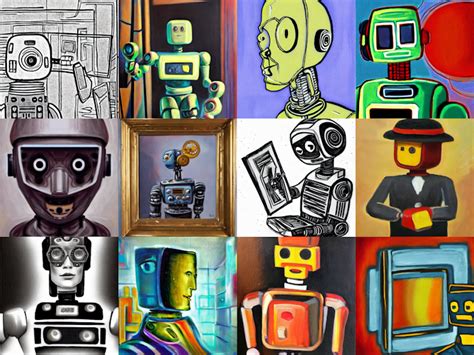Collaborative Art: When Human Creativity Meets AI
The art world is abuzz with the latest developments in collaborative creativity, where human intelligence and artificial intelligence (AI) work together to produce stunning works of art. This trend has been gaining momentum in recent years, with artists, designers, and technologists pushing the boundaries of what’s possible when humans and machines collaborate.
The Intersection of Art and Technology
Art and technology have long been intertwined, but in recent years, the lines between human creativity and AI-generated content have become increasingly blurred. This convergence has led to a new wave of innovative art forms that blur the distinction between human and machine-generated work.
One of the most notable examples is
Neural Style Transfer, a technique developed by Google and Microsoft in which users can upload an image or video and then use AI algorithms to transform it into a different style. This results in incredibly realistic images of famous paintings or portraits created using the original content as input.
Human-AI Collaboration in Art
Artists are now embracing this collaborative approach, pushing the boundaries of what is possible with human creativity and machine intelligence. For example:
- Alexandre Dufeu: A French artist who has been working with AI algorithms to generate unique paintings. His latest piece, “Echoes,” features a stunning image created using his own brushstrokes combined with an AI-generated background.
- Mark Birley
: A British fashion designer who has collaborated with AI-powered systems to create innovative designs for his brand’s runway shows.
The Benefits of Human-AI Collaboration
By combining human creativity and machine intelligence, artists can unlock new possibilities and push the boundaries of what is possible. Some of the benefits include:
- New techniques and methods: Collaborative art allows artists to experiment with new techniques and methods that would be impossible to achieve through traditional means.
- Increased efficiency: AI algorithms can help streamline the creative process by automating repetitive tasks, freeing up time for more complex and innovative ideas.
- Innovative materials and processes: Collaborative art allows artists to work with unexpected materials and processes, pushing the boundaries of what is possible in terms of texture, color, and form.
Challenges and limitations
While collaborative art has the potential to revolutionize the way we think about creativity and innovation, there are also challenges and limitations to address:
- Consistency and repetition: AI-generated content may lack the nuance and emotional depth that human-created works can provide.
- Authenticity and originality: As with any artistic endeavor, there is a risk of homogenization or repetition if too much emphasis is placed on collaboration.
The Future of Collaborative Art
As technology continues to advance, we can expect to see even more innovative applications of collaborative art. Some predictions for the future include:
- Increasing use of AI

: AI-generated content will become increasingly sophisticated and integrated into the creative process.
- New forms of collaboration: Artists may experiment with new forms of collaboration, such as co-creation between humans and other species or machines.
In conclusion, collaborative art is not just about fusing human creativity with machine intelligence; it is about pushing the boundaries of what is possible and creating something truly innovative. As technology continues to advance, we can expect to see even more exciting applications of this trend, leading to new forms of artistic expression and innovation.
